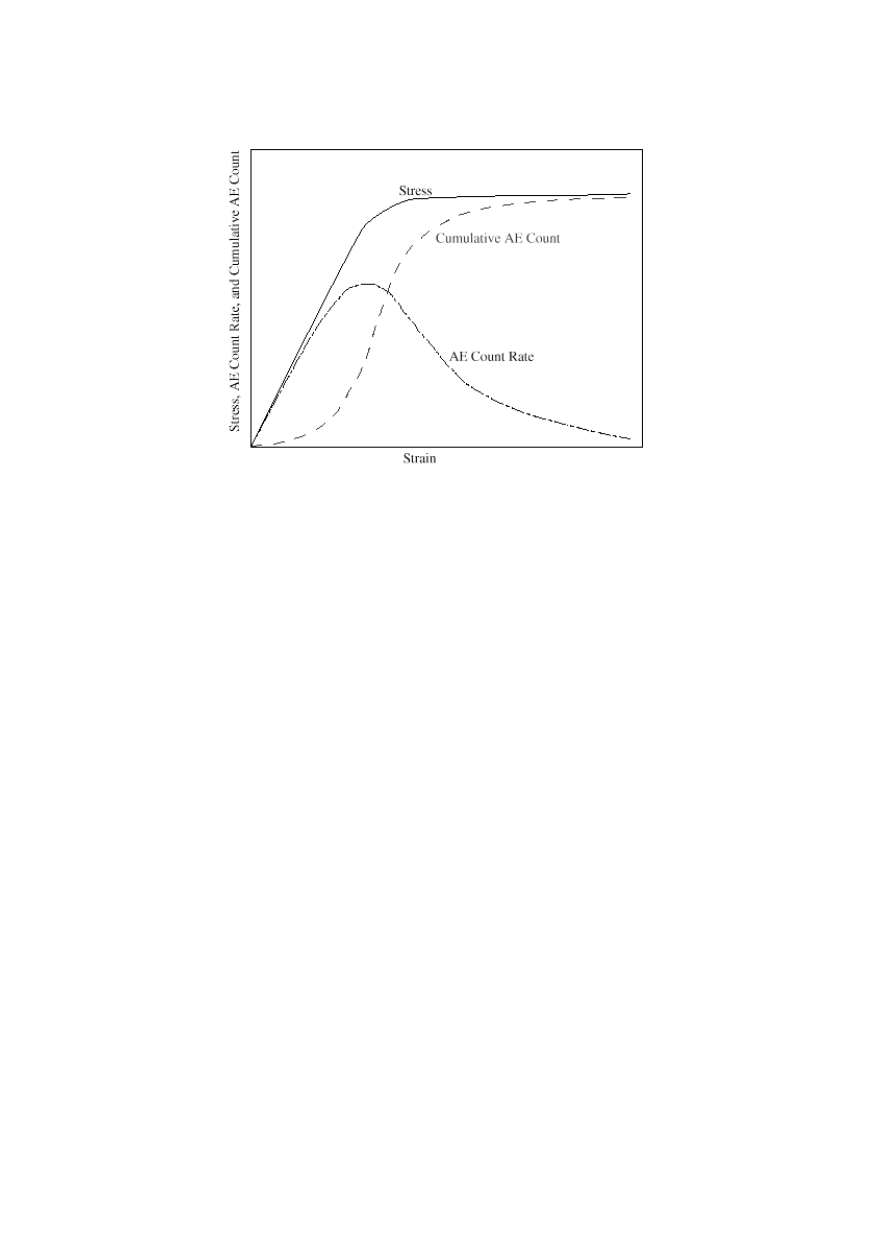

254
phases, such as precipitates. High-sensitivity AE sensors can pick up signals at an early
stage of fatigue crack initiation, such as dislocation movement and slip-band formation.
Figure 12: The illustration of AE: A tensile stress-strain curve and AE signals /14/
AE is used for testing of composite materials. Because of more complex damage
mechanisms, such as reinforcement (fibers or particles) failures, delamination, matrix
cracking, and debonding of the fiber and matrix, composite materials provide a greater
variety of AE sources in fatigue and fracture experiments. AE signals resulting from
different damage mechanisms often vary significantly. Most of the composites consist of
at least one hard or brittle phase, which causes stronger AE signals. On the other hand,
because of the homogeneity and simplicity of metals, the wave propagation in metals
should not be as complex as in composites and rocks, since there are less reflections,
diffractions, and scattering in metals. Therefore, metals represent a good subject for
studying source-function and waveform analyses using AE.
New AE systems enable to locate and characterize the nature of AE sources captured.
4. LASERS IN NON-DESTRUCTIVE IMSPECTION AND TESTING DEVICES
Reviewing of various references one can reveal that the topics concerning application
of lasers in NDI are: analytical methods for linear and nonlinear systems, prediction and
simulation, system identification, implementations of contemporary numerical systems
(like finite elements method - FEM, boundary elements method - BEM) /15/, experimen-
tal methods, correlation methods, structural dynamics in different environments, noise
and vibration monitoring, failure detection, sensors and transducers, signal processing
/16, 17/. In many of these tasks lasers are applied in developed devices, schemas and
complete systems. Some examples are presented here.
4.1. The application of laser Doppler vibrometer (LDV)
Bridge structures are exposed to different external loads (traffic, earthquakes, impacts,
and random variable loads) during lifetime. This may cause structures unexpected
damage in service, which may lead to failures with loss of human lives and costly repair.
Structural health monitoring has become an important inspection and research topic
for damage assessment and safety evaluation of structures, and it is possible to be done by


















